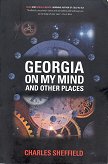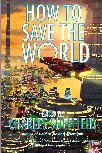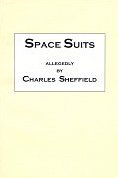Although publication-date-wise, it's been a long gap between volume 3
and 4 of this series, it isn't so long for me: I didn't find Transcendence
until 1995. Sheffield has changed publisher for this 4th, and probably
last, episode, in the saga of the Builders.
All the usual characters rush, or are pushed, around the galaxy, from
Artifact to Artifact, trying to understand what's happening. A new
Artifact, the Labyrinth, has appeared, and the other Artifacts have
started to change. Professor Darya Lang, infuriated by the theories of
Quintus Bloom, rushes off to explore Labyrinth, accompanied by the
Hymenopt Kallik and the Lo'tfian J'merlia. Hans Rebka and the embodied
computer E. C. Tally explore Paradox. Bloom, along with Louis Nenda and
the Cecropian Atvar H'sial, go back to the Zardalu planet in the Torvil
Anfract. But the Artifact changes mean few end up where they expected. Can
Darya solve the mystery of the Builders before everyone is killed by the
contracting, disappearing Artifacts?
The weirdness of the Artifacts is well described: the sheer vastness and
alienness of the constructs is vividly evoked. It's also good to have a
load of alien species, none of which is in the least bit humanoid, and
none of which is 'comic relief' or 'evil monster'. Even the Zardalu, past
scourge of the Galaxy, aren't just cardboard villains. Well, no more
cardboard than most of the other characters, anyway. Example: Atvar H'sial
is a wonderfully-designed alien, who 'sees' by sonar and 'hears' and
'speaks' by smell. But she doesn't come across as alien: she and the human
Louis Nenda are partners-in-crime, and have virtually identical
motivations. Her only alienness is the running joke of her failing to
understand 'human mating rituals'. Similarly, Kallik and J'merlia's only
alienness is that they are slaves who want to be slaves; J'merlia
is constantly described as 'mad', yet exhibits no mad behaviour
(except possibly for his desire to continue as Atvar H'sial's slave). Even
E. C. Tally, a computer in a human body, seems as human as (all) the
others, except for an ability to think faster. They aren't even that alien
to each other: nobody ever seems to misunderstand anyone else's motives
for long. The only character I find distinguishable from the rest is
Darya, and I find her intensely irritating. How anyone with such a
fragile, childish ego has survived so long in academia, I have no idea.
I don't read hard SF for its characterisations, however. I agree that "criticising
[a 'Landscape Novel'] for a
lack of characters is like criticising the expressions on the faces in
Constable's landscapes". I just wish that writers didn't feel the
need to try to put in 'real' characters -- and end up drawing
stick figures. The Artifacts are by far the most interesting characters in
this series, and the attempts to understand them are the best parts of the
plot. This is probably the ultimate 'Big Dumb Objects' series.




















